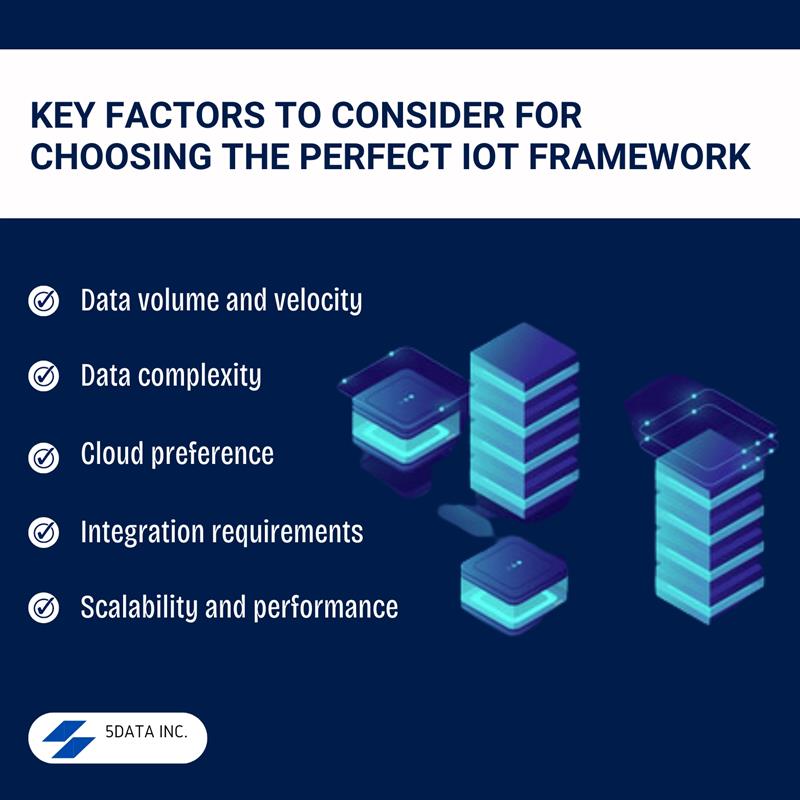Data ingestion, which involves capturing, storing, and preparing unstructured data analysis, is a fundamental step in the IoT data pipeline. This article delves into the top IoT frameworks for efficient DI in 2024, highlighting key aspects of the data integration process, top data ingestion tools, and data handling and empowering organizations to leverage their IoT data fully.
Key Takeaways
- Effective data ingestion is essential for IoT, ensuring seamless data capture, transformation, and storage to drive valuable insights and data-driven decisions.
- Selecting the appropriate IoT framework, such as Apache Kafka or AWS IoT Core, depends on data volume, velocity, and complexity to meet specific project needs.
- Real-time data management, facilitated by frameworks like Apache Kafka and AWS IoT Core, enables immediate insights and swift responses to dynamic conditions.
Understanding Data Ingestion
The Internet of Things (IoT) encompasses devices like sensors and smart appliances that generate data streams. Efficient data ingestion is essential for harnessing this data. It involves transporting data from various sources to storage for access, use, and analysis. This process is vital for building effective data pipelines, enabling real-time processing, and supporting data analytics and business intelligence. As the foundation of any data-driven initiative, data ingestion includes:
- Extracting data from diverse sources.
- Transforming it into a usable format.
- Loading it into a data warehouse or data lake for further analysis.
Ensuring efficient data ingestion is essential for maintaining data quality, reliability, and timely access.
Key components of data ingestion:
- Data sources: IoT devices, sensors, databases, APIs, and other data systems generating data.
- Data extraction: Gathering data from various sources using appropriate methods.
- Data transformation: Cleaning, converting, and enriching data to align with desired formats and schemas.
- Data Ingestion Tools: Tools and platforms designed to extract, transform, and load (ETL) data.
- Data Pipelines: Mechanisms that transport data from sources to destinations.
Data Life Cycle Management Services oversee the entire data journey, from its creation and storage to its eventual disposal, ensuring data quality, security, and compliance.
Top IoT Frameworks For Efficient Data Ingestion
Data engineers use the best data ingestion tools to ingest data, including log data, into a centralized repository, where data visualization and data science techniques are applied to structured data stored in the Hadoop Distributed File System. Several IoT frameworks have emerged as leaders in data management capabilities. The more prominent ones are:
Apache Kafka – A distributed streaming data platform for handling high-throughput process data streams.
Data ingestion capabilities:
- Real-time data computation and ingestion.
- High performance and scalability.
- Fault tolerance and durability.
- Integration with various data sources and sinks.
Use cases: Ideal for IoT applications requiring real-time analytics, stream processing, and event-driven architectures.
Apache Spark – A comprehensive analytics engine for big data manipulation, offering high-speed processing, real-time analytics, and seamless integration with various data sources.
Data ingestion capabilities:
- Batch and streaming data manipulation.
- Support for various data formats and sources.
- In-memory computation for fast processing.
- Integration with machine learning libraries.
Use cases: It suits batch and real-time data ingestion, complex data transformation processes, and machine learning workloads.
Apache NiFi – A data system for automating data ingestion pipelines, enabling efficient data flow management and real-time processing across diverse sources.
Data ingestion capabilities:
- User-friendly interface for building data flows.
- Support for a wide range of data formats and protocols.
- Data provenance and lineage tracking.
- Integration with other data control tools.
Use cases: Excellent for complex data ingestion pipelines with multiple data sources and transformations.
AWS IoT Core – A managed cloud platform for connecting and managing IoT devices.
Data ingestion capabilities:
- Secure data transfer from devices to the cloud.
- Integration with AWS services for data handling and analysis.
- Rule-based data routing and filtering.
- Device management and shadowing.
Use cases: Well-suited for IoT applications leveraging the AWS ecosystem and requiring cloud-based data integration.
Azure IoT Hub – A fully managed IoT service for connecting, monitoring, and controlling IoT sensors.
Data ingestion capabilities:
- Bidirectional communication with IoT sensors.
- Device management and provisioning.
- Integration with Azure data services for analytics.
- Support for various messaging protocols.
Use cases: Ideal for IoT solutions built on the Azure platform that requires comprehensive device management.

Selecting The Ideal Framework For Data Warehousing And Cloud Integration
Efficient data ingestion requires a robust data warehouse environment to store and manage vast data. Cloud-based data warehouses, such as Amazon Redshift, Google BigQuery, and Azure Synapse Analytics, offer scalable and flexible storage solutions, enabling seamless integration with IoT data streams and facilitating advanced data analytics.
Selecting the appropriate IoT framework depends on several factors:
- Data volume and velocity: High-volume, real-time data channels require frameworks like Kafka or Spark.
- Data complexity: Complex data transformations and processing benefit from Spark or NiFi.
- Cloud preference: AWS IoT Core or Azure IoT Hub are suitable for cloud-native solutions.
- Integration requirements: Consider existing data infrastructure and tools.
- Scalability and performance: Evaluate the framework’s ability to handle growing data volumes.
Real-Time Data Management In Data Ingestion
Real-time data processes are critical to IoT data ingestion tools, allowing businesses to gain immediate insights and respond swiftly to changing conditions. Frameworks like Apache Kafka and AWS IoT Core excel in handling instant data flows, providing low-latency processing data and analytics capabilities. The data ingestion process involves several stages:
- Data Collection: Extract data from smart devices and other sources.
- Data Transformation: Cleaning and converting unprocessed data into a suitable format for storage and analysis.
- Data Loading: Storing transformed data in data warehouses or data lakes.
- Data Processing: Analyzing data in real-time or batch mode to extract insights.
Data Administration And Analytics
Data administration capabilities are essential for maintaining data quality, consistency, and security. Effective management ensures that ingested data is properly governed, cataloged, and accessible for analysis. Advanced analytics data ingestion tools can then uncover valuable insights from the data, supporting data-driven decision-making processes.
Challenges And Best Practices
Challenges
- Data Volume and Velocity: Managing IoT data’s sheer volume and speed can be overwhelming.
- Data Integration: It involves merging data from various sources into a single, cohesive view.
- Scalability: Maintaining performance as data volume grows.
- Data Security: Protecting sensitive information from breaches.
Best Practices
- Data quality Management: Ensure data accuracy, completeness, and consistency through data validation and cleaning.
- Regulatory Compliance: This involves safeguarding sensitive information through encryption and implementing access controls, ensuring that data practices comply with relevant laws and regulations.
- Performance optimization: can be achieved by leveraging indexing, partitioning, and compression techniques.
- Error handling: Implement robust error handling mechanisms to prevent data loss.
- Monitoring and logging: Track data ingestion performance and identify issues.
Data Collection and Data Management Service Providers offer comprehensive solutions for gathering, organizing, and maintaining data to ensure accuracy and accessibility for business analytics and decision-making.
Conclusion
Efficient data ingestion is vital for any successful IoT implementation. By utilizing the right IoT frameworks and adhering to best practices, organizations can harness the value of their IoT data, gaining crucial insights for business growth. In 2024, leveraging top IoT frameworks for data ingestion will enable seamless data integration, real-time processing, and advanced analytics. This approach will help organizations unlock the full potential of their IoT data, drive better business outcomes, and maintain a competitive edge.
Frequently Asked Questions (FAQS)
What distinguishes data ingestion from data integration?
- Data ingestion involves capturing and preparing raw data for analysis, while data integration focuses on merging data from multiple sources to form a unified view.
How can I ensure data quality during the ingestion process?
- Data quality can be maintained through validation, cleaning, and transformation processes. Implementing data quality checks and using data profiling tools is crucial.
How can I choose the best data ingestion tool for my IoT project?
- When selecting a data ingestion tool, consider factors like data volume, velocity, complexity, desired analytics, and cloud preference. Evaluate the tool’s performance, scalability, and integration capabilities.

Rasmita Patro
Author
